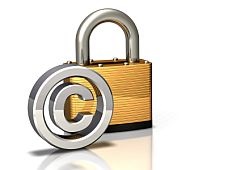17 USC 121 – Limitations on exclusive rights: Reproduction for blind or other people with disabilities
(a) Notwithstanding the provisions of section 106, it is not an infringement of copyright for an authorized entity to reproduce or to distribute in the United States copies or phonorecords of a previously published literary work or of a previously published musical work that has been fixed in the form of text or notation if such copies or phonorecords are reproduced or distributed in accessible formats exclusively for use by eligible persons.
Terms Used In 17 USC 121
- copies: includes the material object, other than a phonorecord, in which the work is first fixed. See 17 USC 101
- individual: shall include every infant member of the species homo sapiens who is born alive at any stage of development. See 1 USC 8
- phonorecords: includes the material object in which the sounds are first fixed. See 17 USC 101
- State: means a State, the District of Columbia, the Commonwealth of Puerto Rico, or any other territory or possession of the United States. See 1 USC 7
- United States: when used in a geographical sense, comprises the several States, the District of Columbia and the Commonwealth of Puerto Rico, and the organized territories under the jurisdiction of the United States Government. See 17 USC 101
(b)(1) Copies or phonorecords to which this section applies shall—
(A) not be reproduced or distributed in the United States in a format other than an accessible format exclusively for use by eligible persons;
(B) bear a notice that any further reproduction or distribution in a format other than an accessible format is an infringement; and
(C) include a copyright notice identifying the copyright owner and the date of the original publication.
(2) The provisions of this subsection shall not apply to standardized, secure, or norm-referenced tests and related testing material, or to computer programs, except the portions thereof that are in conventional human language (including descriptions of pictorial works) and displayed to users in the ordinary course of using the computer programs.
(c) Notwithstanding the provisions of section 106, it is not an infringement of copyright for a publisher of print instructional materials for use in elementary or secondary schools to create and distribute to the National Instructional Materials Access Center copies of the electronic files described in sections 612(a)(23)(C), 613(a)(6), and section 674(e) of the Individuals with Disabilities Education Act that contain the contents of print instructional materials using the National Instructional Material Accessibility Standard (as defined in section 674(e)(3) of that Act), if—
(1) the inclusion of the contents of such print instructional materials is required by any State educational agency or local educational agency;
(2) the publisher had the right to publish such print instructional materials in print formats; and
(3) such copies are used solely for reproduction or distribution of the contents of such print instructional materials in accessible formats.
(d) For purposes of this section, the term—
(1) “accessible format” means an alternative manner or form that gives an eligible person access to the work when the copy or phonorecord in the accessible format is used exclusively by the eligible person to permit him or her to have access as feasibly and comfortably as a person without such disability as described in paragraph (3);
(2) “authorized entity” means a nonprofit organization or a governmental agency that has a primary mission to provide specialized services relating to training, education, or adaptive reading or information access needs of blind or other persons with disabilities;
(3) “eligible person” means an individual who, regardless of any other disability—
(A) is blind;
(B) has a visual impairment or perceptual or reading disability that cannot be improved to give visual function substantially equivalent to that of a person who has no such impairment or disability and so is unable to read printed works to substantially the same degree as a person without an impairment or disability; or
(C) is otherwise unable, through physical disability, to hold or manipulate a book or to focus or move the eyes to the extent that would be normally acceptable for reading; and
(4) “print instructional materials” has the meaning given under section 674(e)(3)(C) of the Individuals with Disabilities Education Act.
